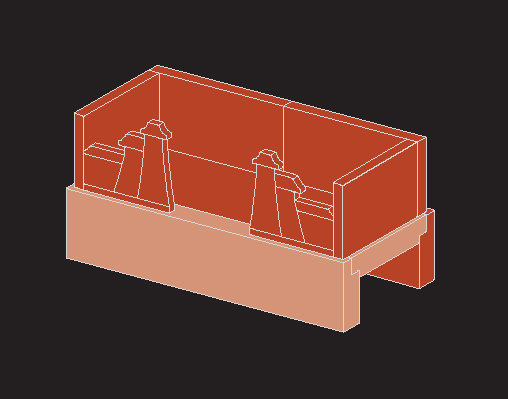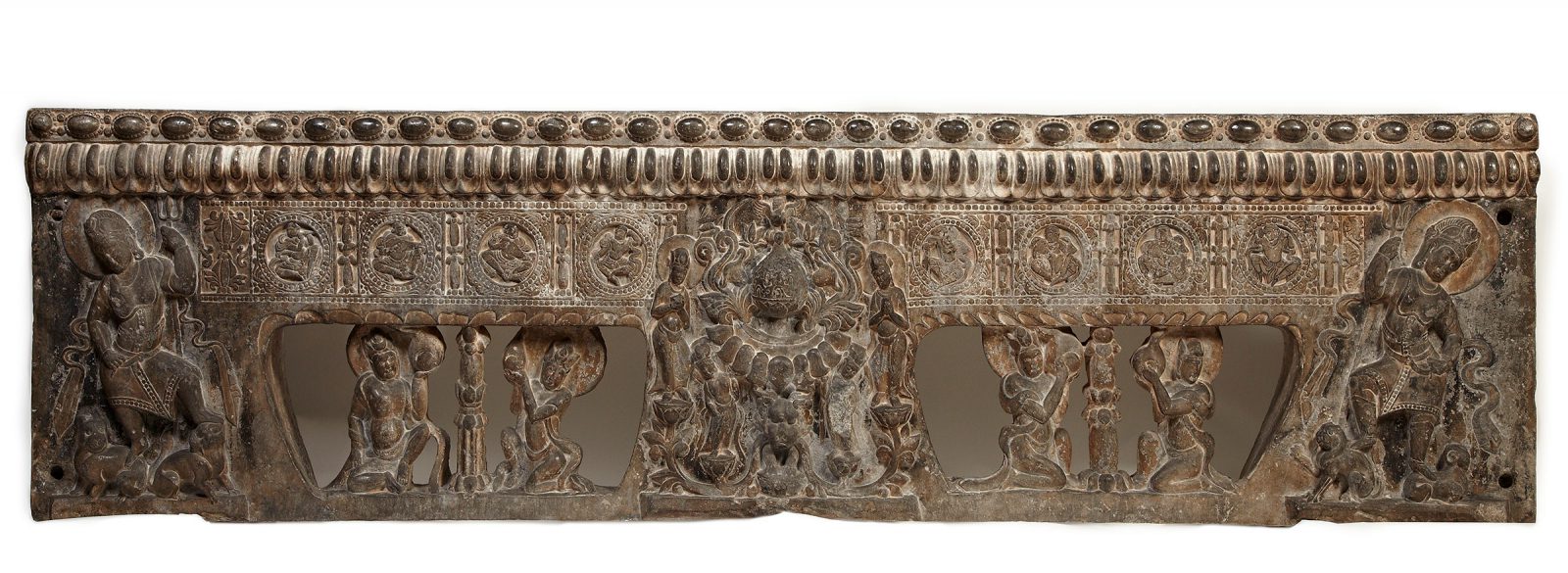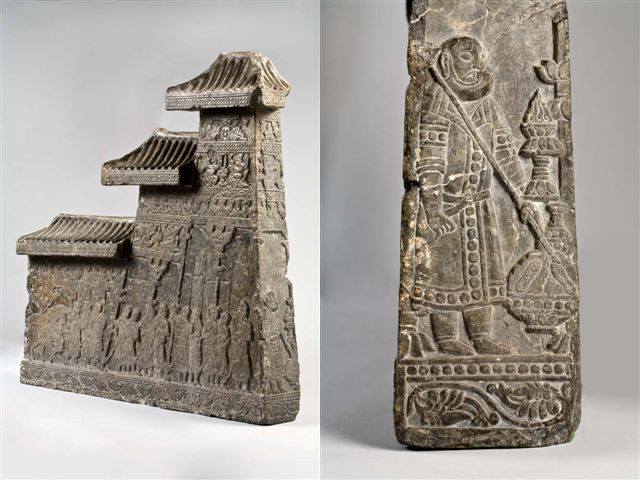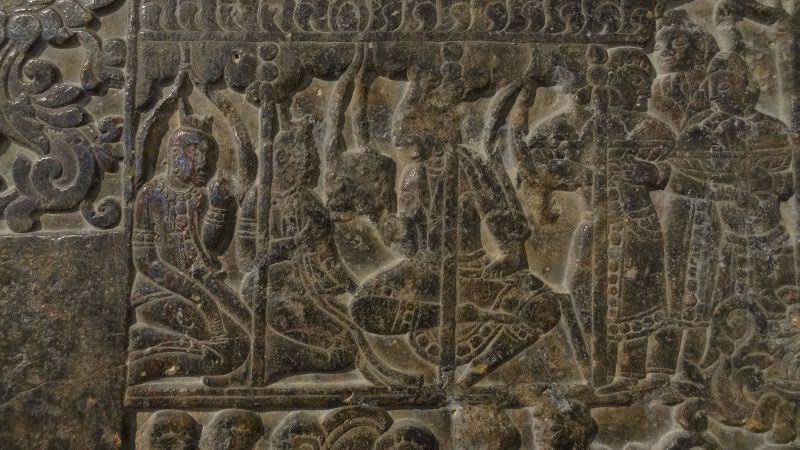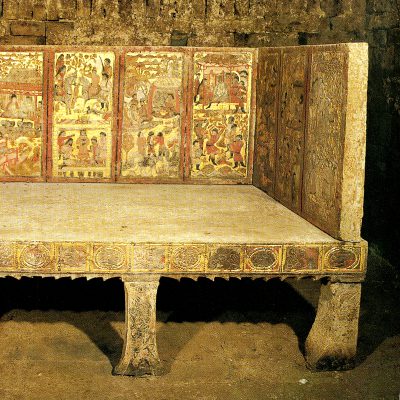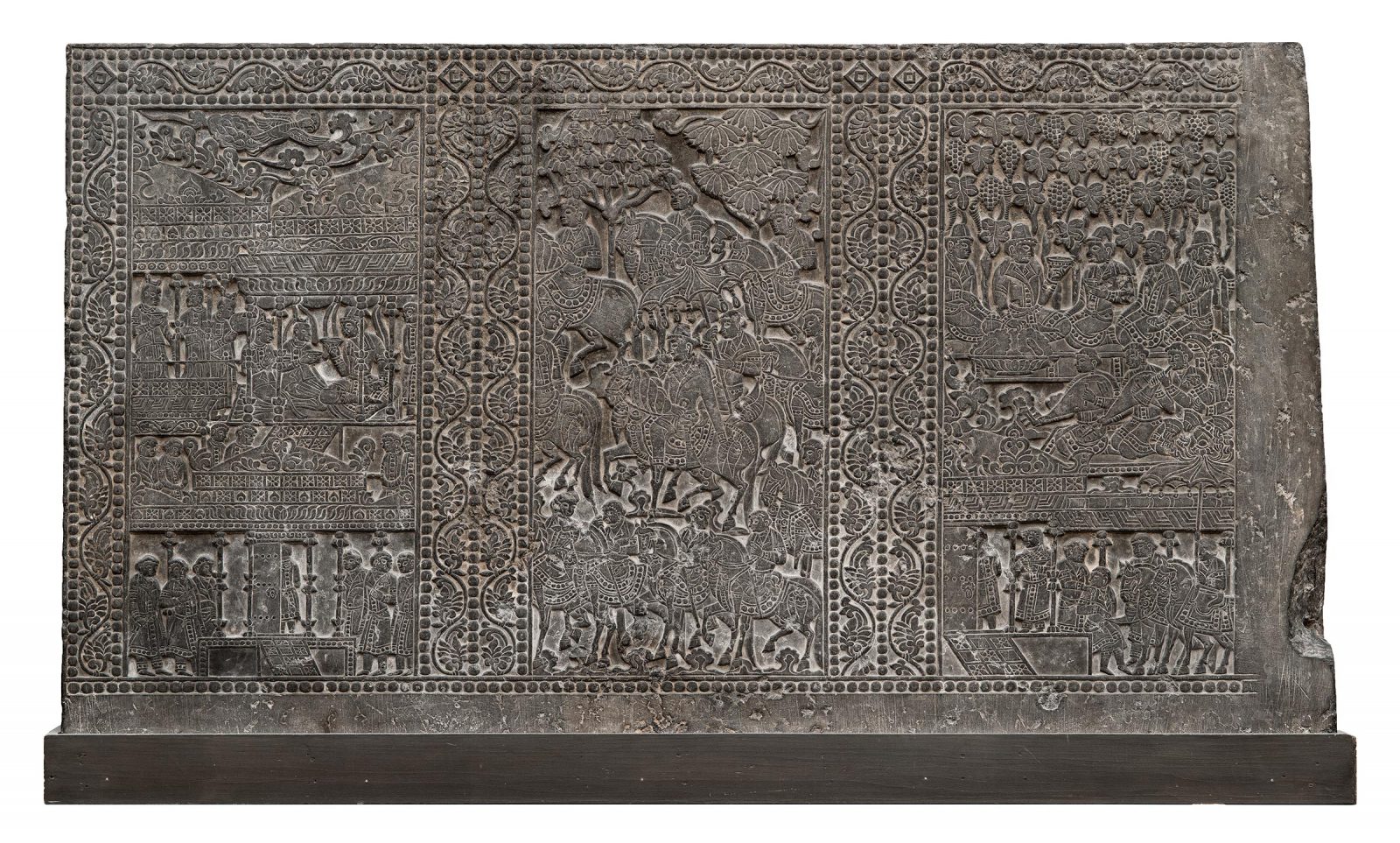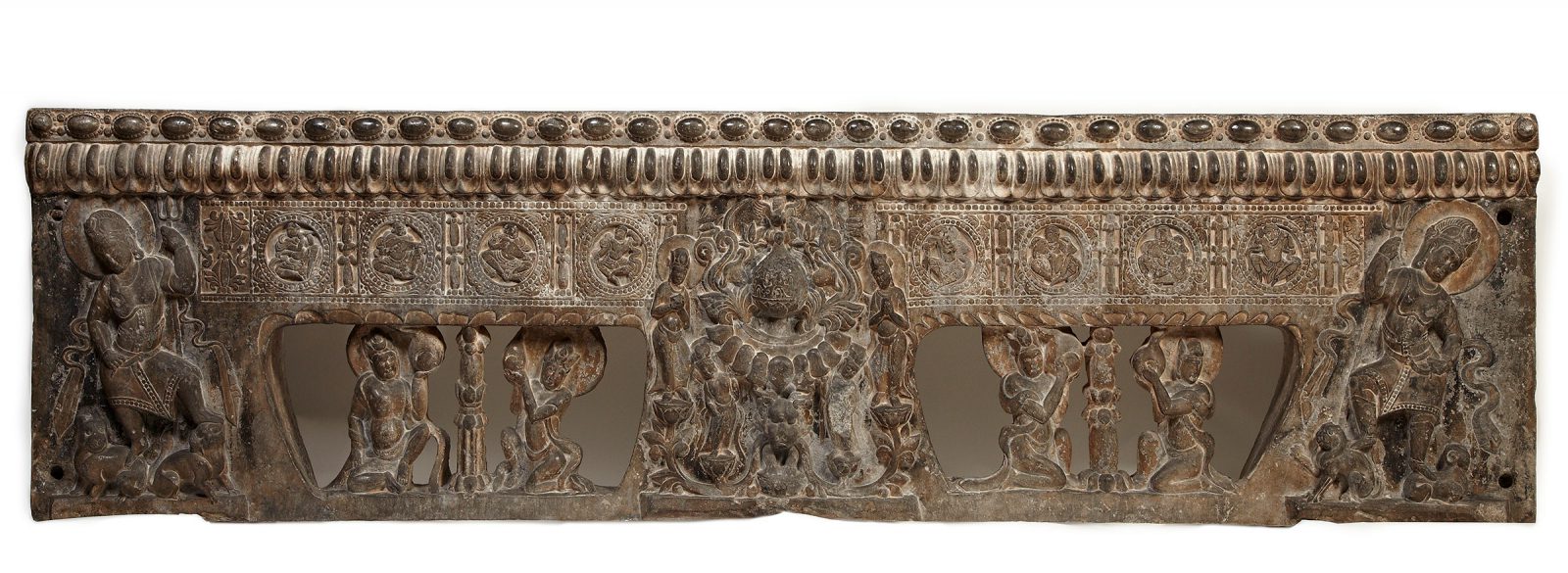
Anyang Funerary Bed
China, purportedly Anyang 安阳 / 安陽, Henan Province
Northern Qi dynasty (550–577 CE)
Marble with traces of pigment
Base: Freer Gallery of Art, Gift of Charles Lang Freer: F1915.109, F1915.110, F1915.336; H. 19.3 × W. 96.4 × D. 15.9 cm; H. 60.3 × W. 234 × D. 23.5 cm; H. 19.7 × W. 95.3 × D. 16.5 cm
Gates: Museum of East Asian Art (Cologne); Bc 11, 12; H. 71.5 × W. 74 × D. 14 cm
Back slabs: Museum of Fine Arts, Boston, Gift of Denman Waldo Ross and G. M. Lane, 1912; 12.588–9; H. 63.8 × W. 116 × D. 10 cm; H. 64 × W. 115.8 × D. 10 cm
Side slab: Musée national des arts asiatique–Guimet, Gift of Edgar Worsch, 1913; EO.2062: H: 50 × W. 1.09 cm
Freer Gallery of Art, Gift of Charles Lang Freer, F1915.110.
In search of new opportunities, many Sogdians traveled frequently and some ultimately decided to reside abroad. In fact, Chinese sources tell of Sogdian communities dispersed across China by the 6th century. Far from home, these settlers often adopted Chinese practices, as we can see with this elaborate tomb furnishing; Fig. 1.
Fig. 1 3-D Reconstruction of Funerary Bed. China, purportedly Anyang, Henan Province, Northern Qi dynasty (550–77 CE). Gray marble with traces of pigment. Parts of the bed are divided among several museums. Click to here to interact with the 3-D model and learn more.
Borrowing the form of a traditional Chinese bed, this semi-enclosed stone platform was made to hold the body of the deceased in an elaborate underground tomb. Unlike Chinese mortuary beds, however, the decor of this one combines Buddhist and Mazdean themes with secular subjects and biographical vignettes drawn from the life of a Sogdian immigrant—apparently a highly respected community leader; Fig. 2.
The Buddhist elements are visible on the base, where four haloed divinities stand on lotus blossoms around an incense burner at the center. Two guardians wearing long coats and boots subdue wild animals at the ends of the bed; Fig. 3. A band of lotus petals appears above eight beaded roundels framing images of musicians and dancers in foreign costume. The lotus border and roundels with performers continue on two notched units that represent the side supports of the platform.
Mazdean themes distinguish the reliefs on two miniature walls with gate towers that originally stood at the front of the bed, their projecting tenons (now filed down) fitting into rectangular sockets in the base; Fig. 4. Two groups of males wearing long coats, boots, and swords converge on the opening, where, just inside, Mazdean priests, each wearing a padam to cover his mouth, tend the holy fire in special burners. The formal arrangement of the figures suggests this depicts an important ceremony.
The remaining slabs originally framed the back and one side of the bed. (The location of one of the side panels is currently unknown.) Each slab is subdivided into three pictorial units illustrating scenes from the life of the deceased; Figs. 5 and 6.
In each instance, the middle unit portrays the main figure on horseback under a parasol, indicating his high social rank. These scenes are flanked by depictions of drinking and banquetingBanqueting in Sogdiana Learn more about banqueting in Sogdiana, accompanied by musicRetracing the Sounds of Sogdiana Learn more about Sogdian Music and Musical Instruments in Central Asia and China; Fig. 7. Sometimes the gatherings take place in an open pavilion and sometimes under a grape arbor. The same figure, presumably the deceased, appears at the center of each group.
Purportedly found in modern Anyang 安陽 , capital of the Northern Qi dynasty (550–577), this funerary bed is thought to come from the tomb of a sabao 薩保, or Sogdian community leader. His burial in a supposedly underground Chinese-style tomb with mortuary furnishings marks a radical departure from burial practices in Sogdiana. There bodies were typically left exposed to be defleshed by birds of prey before the bones were collected and placed in containers, generally of clay, called ossuaries.
by J. Keith Wilson
Discovered at the end of the Qing dynasty (1644–1911), the bed was split into its component parts and sold to different buyers. Parts are now in four different museums in Europe and the United States. The earliest datable purchases were the two front elements, shaped like miniature gate towers, which the Museum of East Asian Art in Cologne acquired in 1911. The two back slabs with processional and feasting scenes carved in relief were acquired by the Museum of Fine Arts, Boston, in 1912. One year later, the Musée national des Arts asiatiques–Guimet in Paris expanded its collection with a similarly decorated side panel. Charles Freer didn’t buy the last three members—the elements composing the base (highlighted in tan in the illustration)—until 1915. Evidence suggests that all eight pieces passed through the hands of the expatriate Irish merchant and art dealer George Crofts (1871–1925), who traded in Tianjin 天津, China, from as early as 1902. The pieces were first published together in Osvald Siren, Chinese Sculpture from the Fifth to the Fourteenth Century (London: Ernest Benn, 1925), vol. 4, pls. 444–50. Siren provided the Anyang provenance in the same publication in volume 1, page 120.
The first scholar to write about the bed in detail was Giustina Scaglia, who identified the figures as Hephthalites, a nomadic group that dominated Sogdiana in the 6th century. See Giustina Scaglia, “Central Asians on a Northern Ch’i Gate Shrine,” Artibus Asiae 21, no. 1 (1958): 9–28.
Janet Douglas, formerly a conservation scientist at the Freer|Sackler, personally explored the physical dimensions and possible modes of attachment of each element, showing that the extant parts do fit together dimensionally. She cautions, however, that this conclusion should remain speculative in light of our poor understanding of how all the individual members were attached and the absence of several key parts. She has also studied the stone matrix of all the components. See Janet G. Douglas and John T. Haynes, “Petrography of Stone Used for Sculpture from the Buddhist Cave Temples of Xiangtangshan Dating to the Northern Qi Dynasty,” Metropolitan Museum Studies in Art, Science, and Technology 2 (2014): 93–114.

